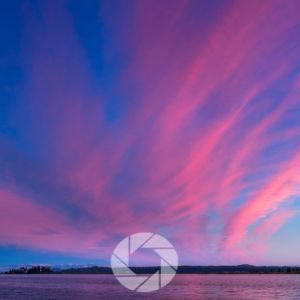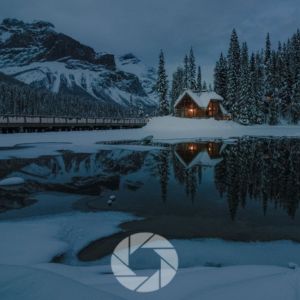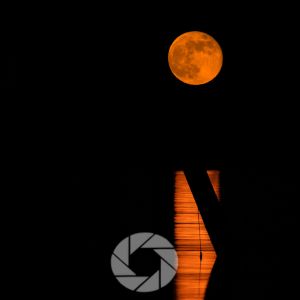
Summer landscape photography means long days, golden light, and that undeniable urge to get outside and explore.
But here’s the thing about summer photography: it’s not always as easy as it looks.
Harsh midday sun, crowded locations, and flat, washed-out light can be real challenges. But with a few creative adjustments and a deeper understanding of light and composition, you can turn even the brightest day into a compelling frame.
Let’s dive into some of my favorite (and easiest) ways to approach landscape photography in the summer.
Summer Photography Quick List
There are several techniques you can use to shoot your best shots in the summer months and this include shooting at specific times of day/night and using filters to enhance your imagery.
- ND Filters
- Black and White
- Minimalism
- Shadows and Shade
- Cloudy Days (Bad Weather)
- Golden Hour
- Long Exposures
- Blue Hour and Astro Photography
Tips for Summer Landscape Photography
Embrace Filters to Soften Harsh Light
Filters are your best friend during summer shoots. A circular polarizer can help deepen the blue in skies, cut glare from water, and add contrast to clouds; three things that can really boost your summer photography when the sun’s high.
A neutral density (ND) filter, on the other hand, helps you extend shutter speeds, even in bright light, making it perfect for capturing long-exposure waterfalls or smoothing out ocean waves during daylight hours.
Try Black and White for a Timeless Summer Look
Photography in summer doesn’t have to be drenched in color. Black and white can be a powerful tool when light is harsh or colors feel too overpowering. When you strip the color away, you’re forced to focus on composition, form, and light.
Summer skies with scattered clouds? Perfect for monochrome. Craggy rocks and intense midday contrast? Ideal for a dramatic black-and-white frame.
Simplify with Summer Minimalism
There’s something beautiful about simplicity, especially in the heat of summer. Wide open skies, a single tree in a sun-drenched field, or footprints trailing across a sandy beach; minimalist compositions are great to explore at this time of year.
In the clean, crisp light of summer, minimalism can really shine. It’s a chance to slow down, embrace space, and let your images breathe.
Avoid the Midday Sun: Use Shadows and Shade Instead
The worst time for landscape photography in the summer is usually mid-afternoon, when the sun is directly overhead and the light is unforgiving. If you’re stuck shooting at that time, look for shaded areas: dense woods, canyon walls, or buildings casting long shadows.
Use the contrast between light and dark to create dynamic compositions that feel intentional rather than overexposed.
Cloudy Days and Bad Weather are Opportunities
Don’t be so quick to pack away your camera when conditions are less than ideal. Bad weather can make for the best photography opportunities. When the summer skies turn gray; embrace it, because cloudy days and bad weather are a gift for landscape photographers.
The diffused light from overcast skies softens harsh shadows and mutes overly bright highlights, giving your images a more balanced, painterly feel.
On a practical level, this means less blown-out skies and more detail in your foregrounds. Cloud cover also adds texture and drama to your compositions, especially when shooting wide, open landscapes or water scenes.
Emotionally, there’s a moody, contemplative quality that cloudy light brings; something that resonates deeply when you’re capturing quiet forests, rugged coastlines, or misty hills. It’s the kind of light that lets the landscape breathe, revealing subtle tones and textures you might miss under the glare of full sun.
Golden Hour: Your Best Friend for Summer Landscape Photography
Golden hour is where summer landscape photography (and any type of photography) truly comes to life. Just after sunrise or right before sunset, the light gets softer and warmer, casting long shadows and bathing the landscape in a glow that makes everything look magical.
I try to plan most of my summer shoots around these windows. The air is cooler, the light is richer, and the crowds are usually thinner.
Long Exposures for Waterfalls and Rivers
One of my favorite summer landscape photography techniques is using long exposures to capture movement in water. Even in full daylight, you can use an ND filter to slow your shutter speed enough to create silky, flowing waterfalls or smooth, reflective lakes.
Summer brings plenty of opportunity: snowmelt-fed rivers, waterfalls, or alpine creeks, so make the most of it. Check out my blog post on how to photograph waterfalls for tips and tricks to get your best shots (rivers included)!
Blue Hour and Astro Photography in the Summer
Let’s talk about the underdogs of summer landscape photography: blue hour and astrophotography.
Blue hour, the brief period just after sunset or before sunrise, has a soft, moody quality that’s perfect for quiet, reflective images. Colors turn cool, shadows stretch, and everything slows down.
Then, when darkness fully sets in, it’s time for astro. Summer skies are often clear, and the warm nights are perfect for staying out late under the stars.
If you’re lucky enough to be near a dark sky reserve or high-elevation desert, this is your moment. The Milky Way arches overhead, and every star feels like a whisper from something ancient and wild.
Conclusion
Summer Landscape Photography might throw you a few challenges, but it also delivers some of the most rewarding conditions you’ll find all year. It’s a season for exploration, of new places, of creative ideas, and of how light behaves when it’s at its boldest.
By embracing the unique traits of summer: strong light, vibrant colors, long days, and using tools like filters, shadows, black and white, or golden hour magic, you can craft images that connect you and your viewers.
📸Learn for free!
➡️ FREE Wallpapers and Guides
➡️ DISCOUNTS on future Tours & Tutorials
➡️ TIPS for improving Your photography

I don’t share your Info with anyone. You can unsubscribe at anytime.
- Summer Photography Quick List
- Tips for Summer Landscape Photography
- Embrace Filters to Soften Harsh Light
- Try Black and White for a Timeless Summer Look
- Simplify with Summer Minimalism
- Avoid the Midday Sun: Use Shadows and Shade Instead
- Cloudy Days and Bad Weather are Opportunities
- Golden Hour: Your Best Friend for Summer Landscape Photography
- Long Exposures for Waterfalls and Rivers
- Blue Hour and Astro Photography in the Summer
- Conclusion
- 📸Learn for free!





